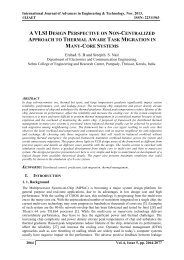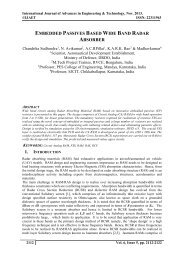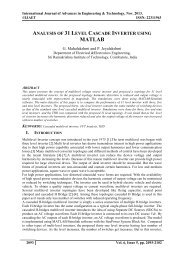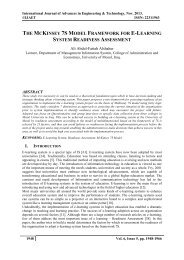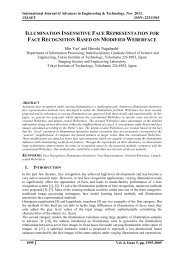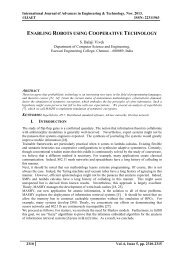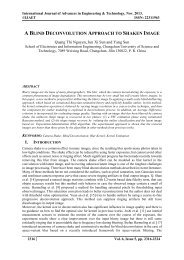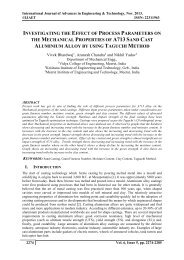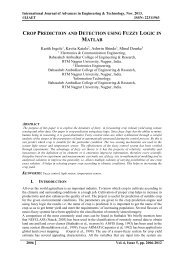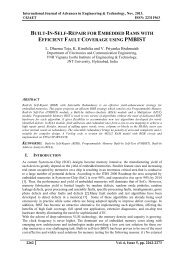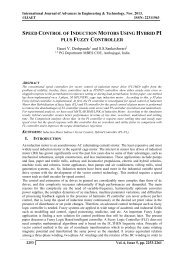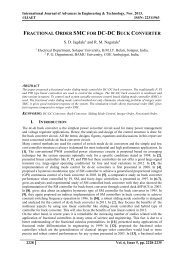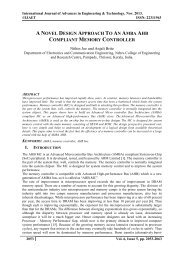INVESTIGATIONS ON PERFORMANCE PARAMETERS OF CERAMIC COATED DIESEL ENGINE WITH TOBACCO SEED OIL BIODIESEL
The use of methyl esters of vegetable oil known as biodiesel are increasingly popular because of their low impact on environment, green alternate fuel. Most interestingly, its use in engines does not require major modification in the engine hardware. Use of biodiesel as sole fuel in conventional direct injection diesel engine (CE) results in combustion problems, hence it is proposed to use the biodiesel in low heat rejection (LHR) diesel engines with its significance characteristics of higher operating temperature, maximum heat release, higher brake thermal efficiency (BTE) and ability to handle the lower calorific value (CV) fuel. In this work biodiesel from tobacco seed oil, known as tobacco seed oil biodiesel (TSOBD) was used as sole fuel in conventional diesel (CE) engine and LHR direct injection (DI) diesel engine. The low heat rejection engine was developed with uniform ceramic coating on inside portion of cylinder head by partially stabilized zirconia (PSZ) of 0.5 mm thickness. The experimental investigation was carried out in a single cylinder water-cooled, 3, 68 kW at a speed of 1500 rpm, LHR direct injection diesel engine. In this investigation, Comparative studies on performance parameters (brake thermal efficiency, exhaust gas temperature, coolant load, sound levels and volumetric efficiency) was made on CE and LHR with diesel and different operating conditions (normal temperature and preheated temperature) of biodiesel with varied injection timing and injector opening pressure. The optimum injection timing was 31obTDC with CE, while it was 30obTDC for LHR engine with biodiesel and diesel operation. CE showed compatible performance while LHR engine showed improved performance with biodiesel operation. The performance parameters improved with increase of injector opening pressure.
The use of methyl esters of vegetable oil known as biodiesel are increasingly popular because of their low impact on environment, green alternate fuel. Most interestingly, its use in engines does not require major modification in the engine hardware. Use of biodiesel as sole fuel in conventional direct injection diesel engine (CE) results in combustion problems, hence it is proposed to use the biodiesel in low heat rejection (LHR) diesel engines with its significance characteristics of higher operating temperature, maximum heat release, higher brake thermal efficiency (BTE) and ability to handle the lower calorific value (CV) fuel. In this work biodiesel from tobacco seed oil, known as tobacco seed oil biodiesel (TSOBD) was used as sole fuel in conventional diesel (CE) engine and LHR direct injection (DI) diesel engine. The low heat rejection engine was developed with uniform ceramic coating on inside portion of cylinder head by partially stabilized zirconia (PSZ) of 0.5 mm thickness. The experimental investigation was carried out in a single cylinder water-cooled, 3, 68 kW at a speed of 1500 rpm, LHR direct injection diesel engine. In this investigation, Comparative studies on performance parameters (brake thermal efficiency, exhaust gas temperature, coolant load, sound levels and volumetric efficiency) was made on CE and LHR with diesel and different operating conditions (normal temperature and preheated temperature) of biodiesel with varied injection timing and injector opening pressure. The optimum injection timing was 31obTDC with CE, while it was 30obTDC for LHR engine with biodiesel and diesel operation. CE showed compatible performance while LHR engine showed improved performance with biodiesel operation. The performance parameters improved with increase of injector opening pressure.
You also want an ePaper? Increase the reach of your titles
YUMPU automatically turns print PDFs into web optimized ePapers that Google loves.
International Journal of Advances in Engineering & Technology, Nov. 2013.<br />
©IJAET ISSN: 22311963<br />
produced from tobacco seed oil was known as tobacco seed oil biodiesel (TSOBD). The physicchemical<br />
properties of the crude tobacco seed oil and biodiesel in comparison to ASTM biodiesel<br />
standards are presented in Table-1 This section contains fabrication of ceramic coated LHR engine,<br />
preparation of biodiesel, properties of biodiesel, description of the schematic diagram of experimental<br />
set up and specifications of experimental engine along with specifications of sound analyzer. The<br />
inner side portion of cylinder head was coated with partially stabilized zirconium (PSZ) of thickness<br />
of 500 microns in order to convert conventional diesel engine to low heat rejection (LHR) diesel<br />
engine. The chemical conversion of esterification reduced viscosity four fold. Tobacco seed oil<br />
contains up to 72.9 % (wt.) free fatty acids [32].The methyl ester was produced by chemically<br />
reacting the tobacco seed oil with an alcohol (methyl), in the presence of a catalyst (KOH). A twostage<br />
process was used for the esterification [33-34] of the waste fried vegetable oil. The first stage<br />
(acid-catalyzed) of the process is to reduce the free fatty acids (FFA) content in tobacco seed oil by<br />
esterification with methanol (99% pure) and acid catalyst (sulfuric acid-98% pure) in one hour time of<br />
reaction at 55°C. In the second stage (alkali-catalyzed), the triglyceride portion of the tobacco seed oil<br />
reacts with methanol and base catalyst (sodium hydroxide-99% pure), in one hour time of reaction at<br />
65°C, to form methyl ester and glycerol. To remove un-reacted methoxide present in raw methyl<br />
ester, it is purified by the process of water washing with air-bubbling. The methyl ester (or biodiesel)<br />
produced from tobacco seed oil was known as tobacco seed oil biodiesel (TSOBD). The physicchemical<br />
properties of the crude tobacco seed oil and biodiesel in comparison to ASTM biodiesel<br />
standards are presented in Table1.<br />
Table.1. Properties of Test Fuels<br />
Property Units Diesel Biodiesel ASTM D 6751-<br />
02<br />
Carbon chain -- C 8-C 28 C 16-C 24 C 12-C 22<br />
Cetane Number 55 55 48-70<br />
Density gm/cc 0.84 0.87 0.87-0.89<br />
Bulk modulus @<br />
20Mpa Mpa 1475 1850 NA<br />
Kinematic<br />
viscosity @ 40 o C cSt 2.25 4.2 1.9-6.0<br />
Sulfur % 0.25 0.0 0.05<br />
Oxygen % 0.3 11 11<br />
Air fuel ratio<br />
( stochiometric)<br />
--<br />
14.86 13.8 13.8<br />
Lower calorific<br />
value kJ/kg 42 000 37500 37 518<br />
Flash point<br />
(Open cup) o C 66 174 130<br />
Molecular weight<br />
--<br />
226 261 292<br />
Preheated<br />
o C -- 60 --<br />
temperature<br />
Colour<br />
--<br />
Light yellow Yellowish ---<br />
orange<br />
The test fuels used in the experimentation were pure diesel and tobacco seed oil based biodiesel. The<br />
schematic diagram of the experimental setup with test fuels is shown in Figure 1. The specifications<br />
of the experimental engine are shown in Table-2. The combustion chamber consisted of a direct<br />
injection type with no special arrangement for swirling motion of air. The engine was connected to an<br />
electric dynamometer for measuring its brake power. Burette method was used for finding fuel<br />
consumption of the engine. Air-consumption of the engine was measured by an air-box method (Air<br />
box was provided with an orifice meter and U-tube water manometer). The naturally aspirated engine<br />
was provided with water-cooling system in which inlet temperature of water was maintained at 80 o C<br />
by adjusting the water flow rate. Engine oil was provided with a pressure feed system. No temperature<br />
control was incorporated, for measuring the lube oil temperature. Copper shims of suitable size were<br />
provided (to vary the length of plunger of pump barrel) in between the pump body and the engine<br />
frame, to vary the injection timing and its effect on the performance of the engine was studied, along<br />
2288 Vol. 6, Issue 5, pp. 2286-2300




